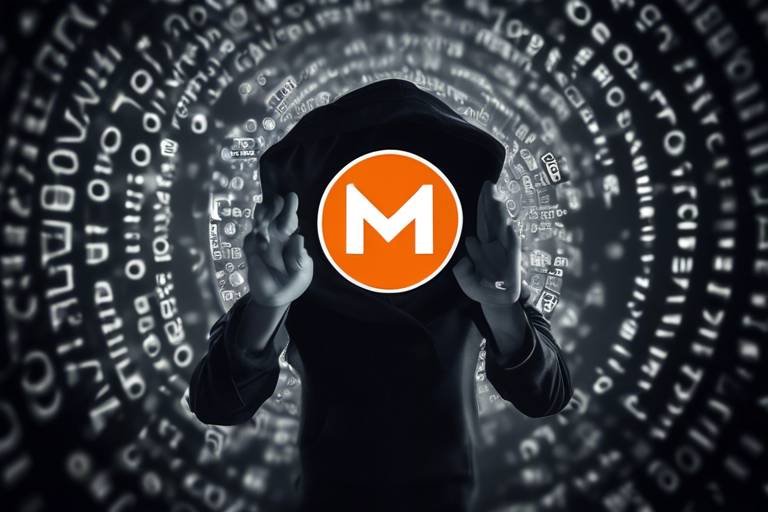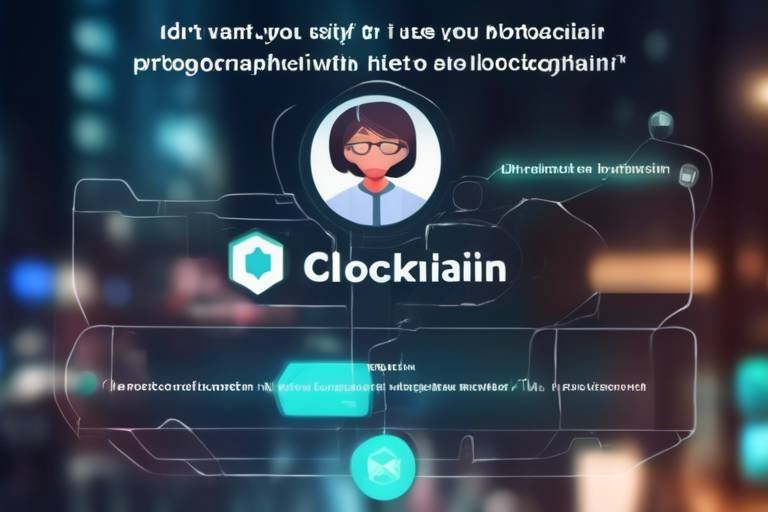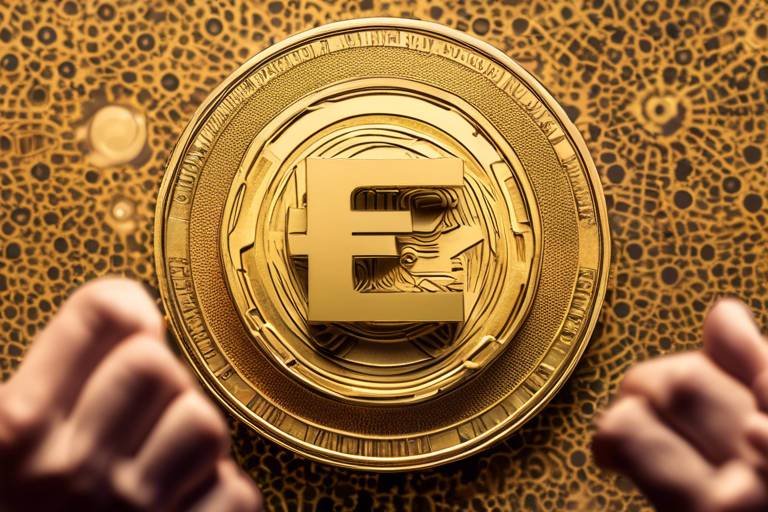QuarkChain - A Scalable Blockchain Solution
In the rapidly evolving world of blockchain technology, scalability has become a buzzword that resonates with developers, investors, and users alike. Enter QuarkChain, a groundbreaking solution designed to tackle the scalability challenges that have plagued traditional blockchain networks. Imagine a highway system that can expand and contract based on traffic — that's essentially what QuarkChain aims to achieve within the blockchain realm. With its innovative architecture and unique features, QuarkChain is not just another player in the blockchain space; it’s a game changer.
At its core, QuarkChain is built to support a high volume of transactions without compromising on speed or efficiency. In a world where users demand instantaneous transactions, QuarkChain's two-layer structure allows it to process thousands of transactions per second. This is akin to having multiple lanes on a highway, enabling a greater number of vehicles to travel simultaneously. The result? A seamless user experience that keeps pace with the growing demands of a digital economy.
But what truly sets QuarkChain apart is its approach to sharding. Think of sharding as dividing a massive pizza into smaller slices, making it easier to serve more customers at once. QuarkChain's sharding mechanism allows the blockchain to split into smaller, manageable parts, enabling parallel processing of transactions. This not only enhances the overall speed but also significantly reduces congestion, a common issue in many blockchain networks today. As we delve deeper into the architecture and features of QuarkChain, it becomes clear that this platform is designed for the future, addressing the challenges that have hindered blockchain adoption across various sectors.
In the following sections, we will explore QuarkChain's architecture, its key features, and how it facilitates cross-chain communication. We will also look at its potential use cases, particularly in decentralized finance (DeFi) and gaming, showcasing how this scalable solution can transform industries. So buckle up; we’re about to embark on an exciting journey through the innovative world of QuarkChain!
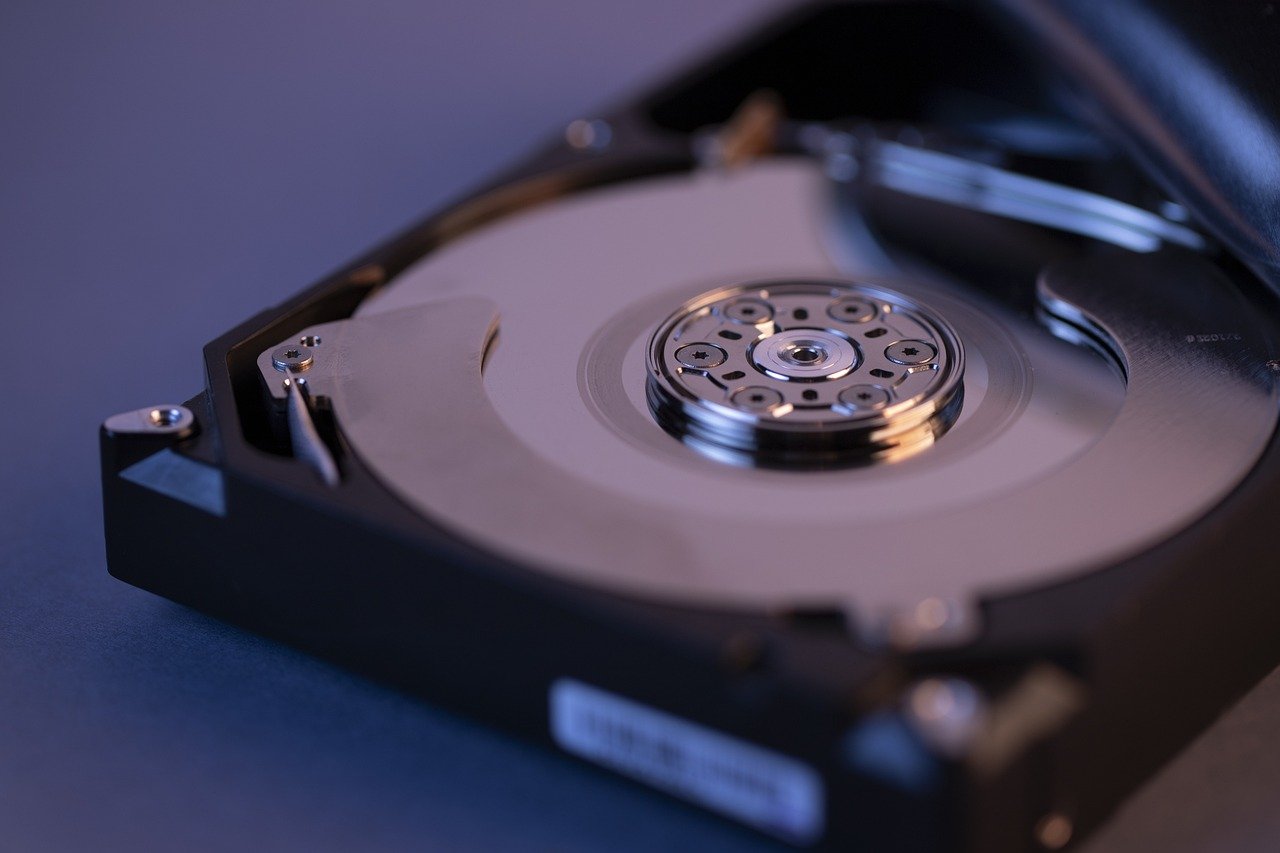
Understanding QuarkChain's Architecture
QuarkChain is not just another blockchain; it’s a revolutionary approach to scalability and performance. Its architecture is ingeniously designed to tackle the common issues that plague traditional blockchains, such as slow transaction speeds and high fees. At its core, QuarkChain employs a unique combination of sharding and a two-layer structure, which together create a robust framework for processing transactions efficiently.
Let’s break this down. The first layer of QuarkChain is responsible for managing the network and validating transactions. This layer acts as the backbone, ensuring that all activities are secure and reliable. On the other hand, the second layer is where the magic happens — it allows for the division of the blockchain into smaller, manageable parts, known as shards. Each shard can process transactions independently and in parallel, which drastically increases the overall throughput of the network.
Imagine a busy highway during rush hour. When every car tries to use the same lane, traffic comes to a standstill. However, if you create multiple lanes, each with its own flow of traffic, you can significantly reduce congestion. This analogy perfectly illustrates how QuarkChain’s sharding mechanism works. By enabling multiple shards to operate simultaneously, QuarkChain can handle thousands of transactions per second, making it one of the most scalable blockchain solutions available today.
Now, let’s dive deeper into the specifics of QuarkChain’s architecture. The sharding process involves dividing the blockchain into various segments, each capable of processing its own transactions. This is not just a random division; it’s meticulously designed to maintain security and integrity. Each shard is linked to the main chain, which ensures that all transactions are recorded accurately and securely. This two-layer system not only enhances scalability but also optimizes the performance of the entire network.
Another fascinating aspect of QuarkChain’s architecture is its ability to support cross-chain communication. This means that different blockchains can interact seamlessly, sharing data and transactions without any hiccups. Such interoperability is crucial in today’s blockchain ecosystem, where various platforms are emerging, each with its own unique features and benefits. QuarkChain’s architecture facilitates this interaction, paving the way for a more interconnected blockchain world.
In summary, QuarkChain’s innovative architecture is a game-changer in the blockchain space. By combining sharding with a two-layer structure, it not only enhances scalability and transaction speed but also ensures security and interoperability. As we move forward, this architecture could very well set the standard for future blockchain solutions, making it an exciting topic for both developers and investors alike.
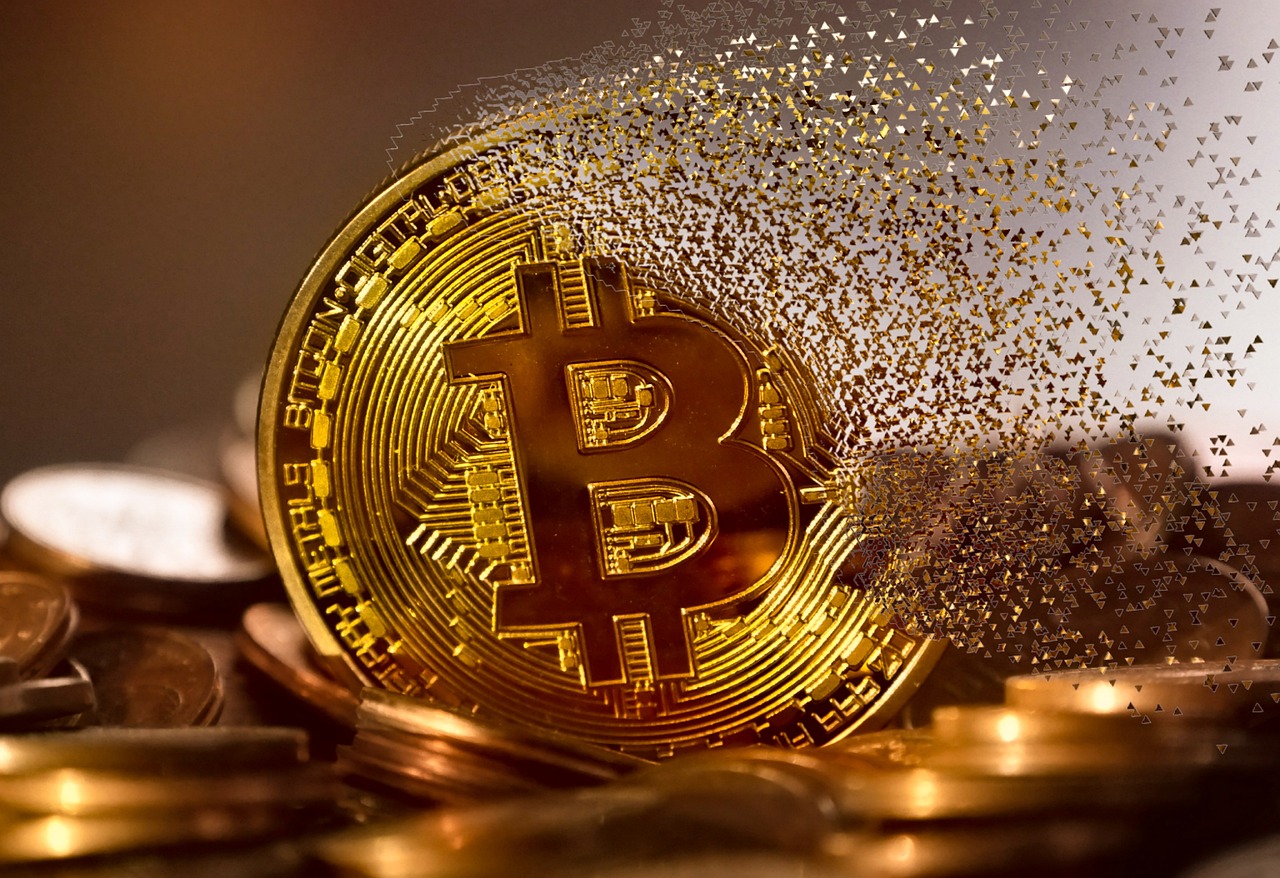
Key Features of QuarkChain
QuarkChain stands out in the crowded blockchain arena, not just for its ambition but also for its unique features that cater to the evolving needs of users and developers alike. One of the most remarkable aspects is its emphasis on high throughput. This means that QuarkChain can handle a massive number of transactions simultaneously, making it an ideal choice for applications that require speed and efficiency. Imagine a bustling highway where cars can zoom past without traffic jams; that’s what QuarkChain aims to achieve in the blockchain world.
Another significant feature is its low transaction fees. In a space where costs can quickly spiral out of control, QuarkChain offers a refreshing alternative. Users can enjoy the benefits of blockchain technology without the burden of exorbitant fees. This is especially crucial for decentralized applications (dApps) and services where users are sensitive to costs. Think of it as a café offering gourmet coffee at the price of regular brew; it’s an enticing proposition!
Moreover, QuarkChain excels in cross-chain compatibility. In an increasingly interconnected digital landscape, the ability to communicate and interact with other blockchains is vital. QuarkChain facilitates this interoperability, allowing different blockchain networks to exchange information and value seamlessly. This is akin to having a universal remote control that can operate various devices—no more juggling multiple remotes!
To give you a clearer picture, let’s break down these features in a table:
| Feature | Description | Significance |
|---|---|---|
| High Throughput | Ability to process thousands of transactions per second. | Enhances user experience and supports high-demand applications. |
| Low Transaction Fees | Minimal costs associated with each transaction. | Attracts more users and developers to the platform. |
| Cross-Chain Compatibility | Seamless interaction with other blockchain networks. | Promotes a more interconnected ecosystem, enhancing utility. |
These features not only set QuarkChain apart but also highlight its potential to redefine how we think about blockchain applications. By focusing on scalability, cost-efficiency, and interoperability, QuarkChain is paving the way for a more accessible and functional blockchain environment. As we dive deeper into the mechanics of QuarkChain, it becomes evident that these features are not just buzzwords; they represent the future of blockchain technology.
- What is QuarkChain? QuarkChain is a scalable blockchain solution designed to enhance transaction speed and reduce costs.
- How does QuarkChain achieve high throughput? Through its innovative architecture that combines sharding and a two-layer structure.
- What are the benefits of low transaction fees? They make blockchain applications more accessible to users and developers.
- Why is cross-chain compatibility important? It allows different blockchains to communicate, enhancing the overall functionality of the ecosystem.

Sharding Mechanism Explained
Sharding is a revolutionary approach that addresses one of the most pressing issues in blockchain technology: scalability. Imagine a bustling city where every car is stuck in traffic. In this scenario, the roads are the blockchain, and the cars represent transactions. If every vehicle had to travel on the same road at the same time, chaos would ensue. This is where sharding comes into play, allowing for a more organized and efficient traffic flow.
At its core, sharding divides the blockchain into smaller, manageable pieces known as "shards." Each shard operates as an independent chain, capable of processing transactions simultaneously. This parallel processing is akin to having multiple lanes on a highway that can accommodate more vehicles, thereby reducing congestion. By decentralizing workload across various shards, QuarkChain enhances transaction throughput significantly.
To visualize how sharding works, consider the following example: if a blockchain can process 1,000 transactions per second (TPS) as a single unit, sharding can potentially multiply that capacity. For instance, if QuarkChain utilizes 10 shards, each capable of handling 1,000 TPS, the overall capacity could soar to 10,000 TPS. This remarkable increase not only improves user experience but also positions QuarkChain as a formidable player in the blockchain ecosystem.
Moreover, sharding allows for more effective resource allocation. Each shard can be tailored to specific applications or user needs, enabling developers to optimize performance based on the unique requirements of their project. This flexibility is crucial in a rapidly evolving digital landscape, where adaptability can make or break a blockchain solution.
However, the implementation of sharding is not without its challenges. It introduces complexities, particularly in maintaining consensus across shards. QuarkChain addresses this through a sophisticated consensus mechanism that ensures all shards remain synchronized while still allowing for independent operation. This balance is essential for maintaining the integrity and security of the entire network.
In summary, the sharding mechanism is a game-changer for QuarkChain, enhancing scalability and transaction speed while providing developers with the tools they need to innovate. By breaking down the blockchain into smaller, more efficient segments, QuarkChain is paving the way for a more scalable and responsive blockchain ecosystem.
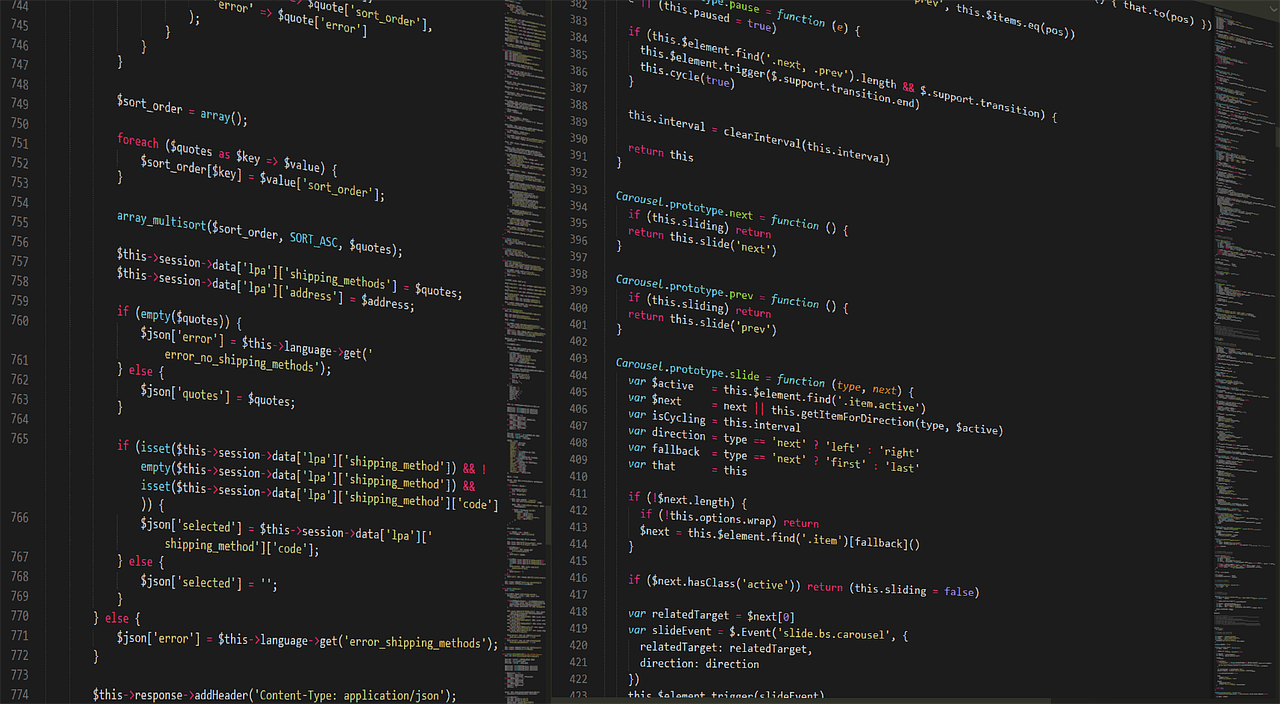
Benefits of Sharding
Sharding, a revolutionary concept in the blockchain space, offers a plethora of benefits that significantly enhance the performance of networks like QuarkChain. At its core, sharding divides the blockchain into smaller, manageable segments known as shards. This division allows for parallel processing of transactions, which is akin to having multiple lanes on a highway. Just as cars can travel simultaneously in different lanes, transactions can be processed concurrently across shards, leading to remarkable improvements in speed and efficiency.
One of the most striking advantages of sharding is the **enhanced transaction speed**. In traditional blockchain systems, each transaction must be processed sequentially, which can lead to bottlenecks and delays. However, with sharding, multiple transactions can occur at once, drastically reducing the time it takes for a transaction to be confirmed. Imagine waiting in line at a coffee shop; if there are multiple baristas serving customers instead of just one, the line moves much faster. This is precisely what sharding does for blockchain transactions.
Moreover, sharding significantly **reduces network congestion**. As the number of users and transactions increases, blockchains can become overwhelmed, leading to higher fees and slower processing times. By distributing the workload across several shards, QuarkChain alleviates this congestion, ensuring that users experience minimal delays and lower transaction costs. This is particularly crucial for applications that require quick interactions, such as decentralized finance (DeFi) platforms and gaming applications.
Additionally, sharding enhances the overall **scalability** of the blockchain. Scalability is one of the most pressing challenges facing blockchain technology today. As more users join the network and transaction volumes surge, traditional blockchains struggle to keep pace. Sharding allows QuarkChain to scale effectively, accommodating increasing demand without sacrificing performance. This scalability is vital for the future of blockchain, as it opens the door for mass adoption across various industries.
Lastly, sharding fosters a more **robust security model**. Each shard operates independently, which means that even if one shard is compromised, the others remain secure. This compartmentalization enhances the overall security of the network, making it more resilient to attacks. In a world where cybersecurity threats are ever-evolving, having a security model that can adapt and withstand such challenges is invaluable.
In summary, the benefits of sharding in QuarkChain are multifaceted and transformative. By improving transaction speed, reducing congestion, enhancing scalability, and bolstering security, sharding positions QuarkChain as a formidable player in the blockchain ecosystem. As the technology continues to evolve, its impact on various sectors, from finance to gaming, will undoubtedly be profound.
- What is sharding? Sharding is a method of partitioning a blockchain into smaller segments, allowing for parallel processing of transactions.
- How does sharding improve transaction speeds? By enabling multiple transactions to be processed simultaneously across different shards, sharding significantly reduces confirmation times.
- Does sharding affect security? Yes, sharding can enhance security by isolating transactions within individual shards, which prevents a compromise in one shard from affecting the entire network.
- Why is scalability important in blockchain? Scalability ensures that a blockchain can handle an increasing number of transactions and users without performance degradation, which is crucial for mass adoption.

Challenges of Implementing Sharding
Implementing sharding in a blockchain ecosystem, while promising, is not without its challenges. One of the most significant hurdles is the complexity of the sharding mechanism itself. Sharding involves splitting the blockchain into smaller, more manageable pieces, or shards, which can operate independently. This process requires a sophisticated coordination system to ensure that all shards remain synchronized and that data integrity is maintained across the network. Imagine trying to manage a large orchestra where each section plays a different piece of music; without a skilled conductor, the result can be chaotic.
Another challenge is security concerns. Sharding can expose the network to various vulnerabilities, such as shard attacks, where an attacker targets a specific shard to compromise its functionality. The decentralized nature of blockchain means that if one shard is breached, it could potentially affect the entire network. This is akin to a weak link in a chain; if one part fails, the whole structure can become compromised. To mitigate these risks, developers need to implement robust security protocols that can protect individual shards while maintaining the overall security of the blockchain.
Moreover, network congestion can still occur if a particular shard experiences a surge in transactions. While sharding is designed to alleviate congestion by distributing workloads, it doesn't completely eliminate the possibility of bottlenecks. If too many transactions are directed to a single shard, it can slow down processing times, defeating the purpose of sharding altogether. This scenario requires careful planning and optimization to ensure that transaction loads are balanced across shards.
Additionally, the interoperability between shards presents another layer of complexity. Each shard may have its own rules and protocols, making it challenging to facilitate communication and transaction validation across the network. This is similar to having different languages spoken in different regions; without a common language, effective communication becomes difficult. Developers must create efficient mechanisms that allow for seamless interactions between shards, ensuring that users can transact without friction.
Finally, the development and maintenance costs associated with implementing sharding can be substantial. Building a sharded blockchain requires advanced technical expertise and resources, which can be a barrier for many projects. The ongoing maintenance of such a complex system also demands continuous investment in updates and security measures. As a result, smaller projects may find it challenging to adopt sharding, potentially leading to a divide in the blockchain ecosystem.
In summary, while sharding presents a promising solution to the scalability issues faced by blockchain networks, it is crucial to address these challenges to harness its full potential. The complexity, security concerns, network congestion, interoperability issues, and development costs all play a significant role in the successful implementation of sharding. By overcoming these obstacles, QuarkChain and similar platforms can pave the way for a more scalable and efficient blockchain future.
- What is sharding in blockchain? Sharding is a technique that divides a blockchain into smaller, more manageable pieces, allowing for parallel processing of transactions.
- What are the main benefits of sharding? Sharding enhances transaction speed, reduces congestion, and improves the overall efficiency of the blockchain network.
- What challenges does sharding face? Key challenges include complexity, security concerns, potential network congestion, interoperability issues, and high development costs.
- How does QuarkChain address these challenges? QuarkChain employs advanced security protocols, load balancing techniques, and efficient communication mechanisms to mitigate the challenges associated with sharding.
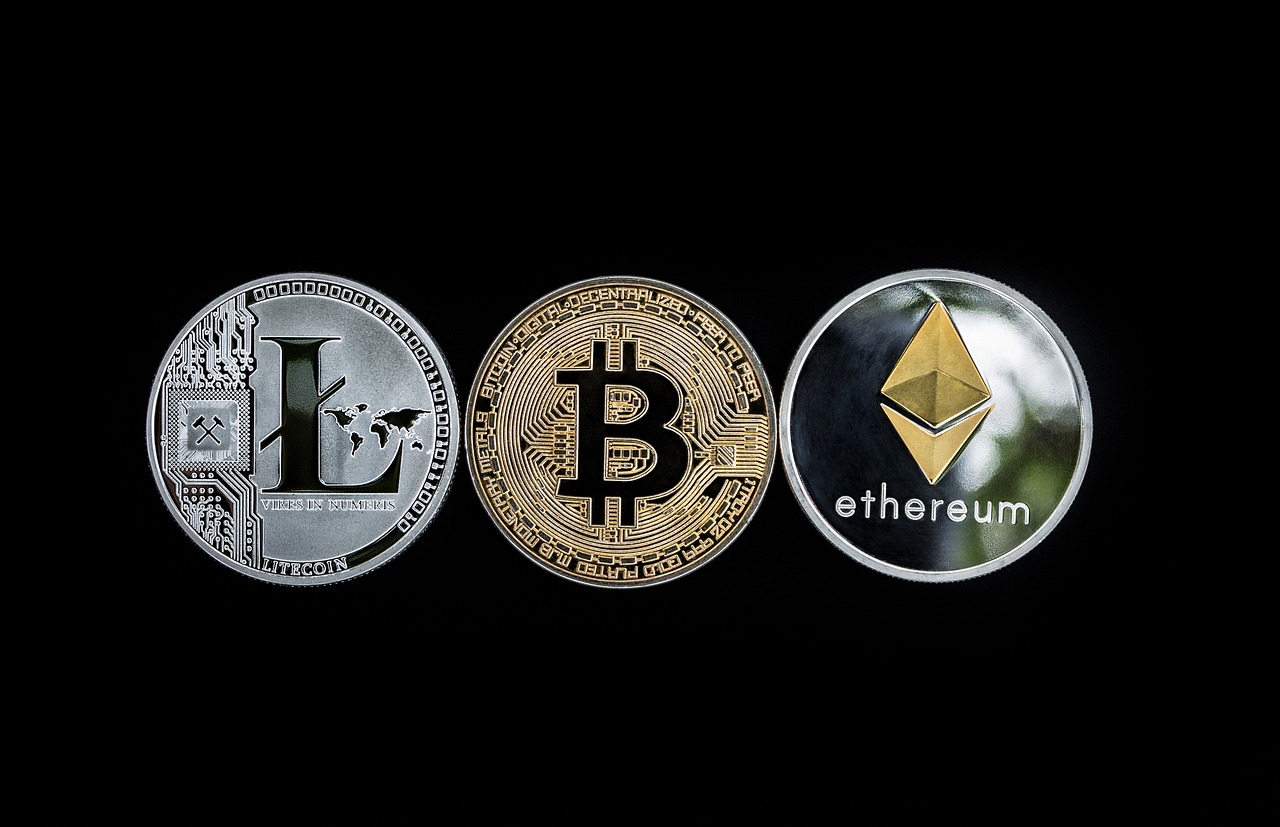
Cross-Chain Communication
In today's rapidly evolving digital landscape, the ability for different blockchain networks to communicate with one another is more crucial than ever. This is where QuarkChain shines, offering a robust solution for . Imagine a world where various blockchains, each with their unique features and capabilities, can seamlessly interact, share data, and conduct transactions without the need for intermediaries. This potential is not just a dream; it's a reality that QuarkChain is actively working to achieve.
At its core, cross-chain communication allows different blockchain ecosystems to collaborate, unlocking a treasure trove of possibilities for developers and users alike. With QuarkChain’s architecture, this interoperability is not just a theoretical concept; it is implemented through innovative technology that facilitates secure and efficient communication between distinct blockchain networks. This means that assets can be transferred across chains, and applications can leverage the strengths of multiple blockchains simultaneously.
One of the standout features of QuarkChain’s cross-chain capability is its two-layer structure. This design enables the main chain to handle the overall consensus and security, while the child chains can operate independently, catering to specific applications or use cases. By allowing each child chain to function autonomously, QuarkChain enhances scalability and reduces congestion, making it easier for various networks to communicate without bottlenecks.
So, how does QuarkChain achieve this seamless communication? The answer lies in its use of smart contracts and atomic swaps. Smart contracts automate the process of transferring assets between chains, ensuring that transactions are executed only when certain conditions are met. This not only enhances security but also builds trust among users. Atomic swaps, on the other hand, allow for direct peer-to-peer exchanges of cryptocurrencies across different blockchains without the need for a centralized exchange, further promoting decentralization.
To illustrate the effectiveness of QuarkChain's cross-chain communication, consider the following table that outlines the key advantages:
| Advantage | Description |
|---|---|
| Interoperability | Facilitates seamless interactions between different blockchain networks. |
| Increased Liquidity | Allows assets to move freely across chains, enhancing market liquidity. |
| Enhanced Security | Smart contracts and atomic swaps provide a secure method for cross-chain transactions. |
| Scalability | Child chains can operate independently, reducing congestion on the main chain. |
In conclusion, is a game-changer for the blockchain industry, and QuarkChain is at the forefront of this revolution. By enabling different blockchain networks to interact effortlessly, QuarkChain not only enhances the functionality of individual chains but also paves the way for a more interconnected and efficient blockchain ecosystem. As we move forward, the importance of cross-chain capabilities will only grow, making QuarkChain a pivotal player in shaping the future of blockchain technology.
- What is cross-chain communication? Cross-chain communication refers to the ability of different blockchain networks to interact and share data seamlessly.
- How does QuarkChain facilitate cross-chain communication? QuarkChain utilizes a two-layer architecture and technologies like smart contracts and atomic swaps to enable secure and efficient interactions between different blockchains.
- What are the benefits of cross-chain communication? Benefits include increased interoperability, enhanced liquidity, improved security, and better scalability.

Use Cases for QuarkChain
QuarkChain's scalability is not just a theoretical concept; it has real-world applications that can revolutionize various industries. Its architecture is designed to handle a high volume of transactions without compromising speed or efficiency, making it an ideal choice for a multitude of use cases. Let's dive into some of the most promising applications of QuarkChain in today's digital landscape.
One of the most exciting areas where QuarkChain shines is in Decentralized Finance (DeFi). With the rapid growth of DeFi platforms, there is a pressing need for a blockchain solution that can support fast transactions and low fees. QuarkChain's ability to process thousands of transactions per second means that users can engage in complex financial operations, such as lending, borrowing, and trading, without experiencing delays. Imagine being able to swap tokens in the blink of an eye or access liquidity with minimal fees—this is the future that QuarkChain is paving the way for.
Moreover, the gaming industry stands to benefit immensely from QuarkChain's capabilities. In an era where gamers demand instant interactions and seamless experiences, QuarkChain's high throughput allows for real-time transactions that can enhance gameplay. Picture an online game where players can buy, sell, and trade in-game assets instantly, all secured by a robust blockchain. This kind of functionality not only improves user engagement but also opens up new revenue streams for game developers.
Additionally, QuarkChain's architecture supports cross-chain compatibility, which is essential for the future of blockchain technology. In a world where multiple blockchain networks exist, the ability to communicate and interact seamlessly is crucial. QuarkChain facilitates this interoperability, allowing different blockchains to share data and value without friction. This is particularly beneficial for applications that require collaboration across various platforms, such as supply chain management and digital identity verification.
To further illustrate the potential use cases of QuarkChain, let’s take a look at a few specific scenarios:
| Use Case | Description | Benefits |
|---|---|---|
| Decentralized Finance (DeFi) | Platforms for lending, borrowing, and trading without intermediaries. | Fast transactions, low fees, and enhanced liquidity. |
| Gaming Applications | Online games that utilize blockchain for asset trading and ownership. | Real-time interactions, secure transactions, and new monetization models. |
| Supply Chain Management | Tracking and verifying the movement of goods across multiple parties. | Improved transparency, reduced fraud, and streamlined operations. |
| Digital Identity Verification | Securely managing and verifying identities using blockchain. | Enhanced security, reduced identity theft, and user control over personal data. |
As we can see, QuarkChain's innovative technology is not just a theoretical construct; it has tangible applications that can reshape various sectors. From finance to gaming, the potential is vast, and as more developers and businesses recognize the advantages of this scalable blockchain solution, we can expect to see a surge in its adoption. The future is bright for QuarkChain, and it’s exciting to think about the possibilities that lie ahead.
- What is QuarkChain? QuarkChain is a blockchain platform designed to provide high scalability and fast transactions through its unique architecture that combines sharding and a two-layer structure.
- How does QuarkChain achieve scalability? By utilizing a sharding mechanism, QuarkChain divides the blockchain into smaller segments, allowing for parallel processing of transactions.
- What industries can benefit from QuarkChain? QuarkChain can be applied in various sectors, including decentralized finance (DeFi), gaming, supply chain management, and digital identity verification.
- Is QuarkChain secure? While sharding offers many advantages, security is a priority for QuarkChain, and ongoing measures are in place to address potential risks.
- How can I get involved with QuarkChain? You can explore the QuarkChain community, participate in discussions, or even develop applications on its platform.
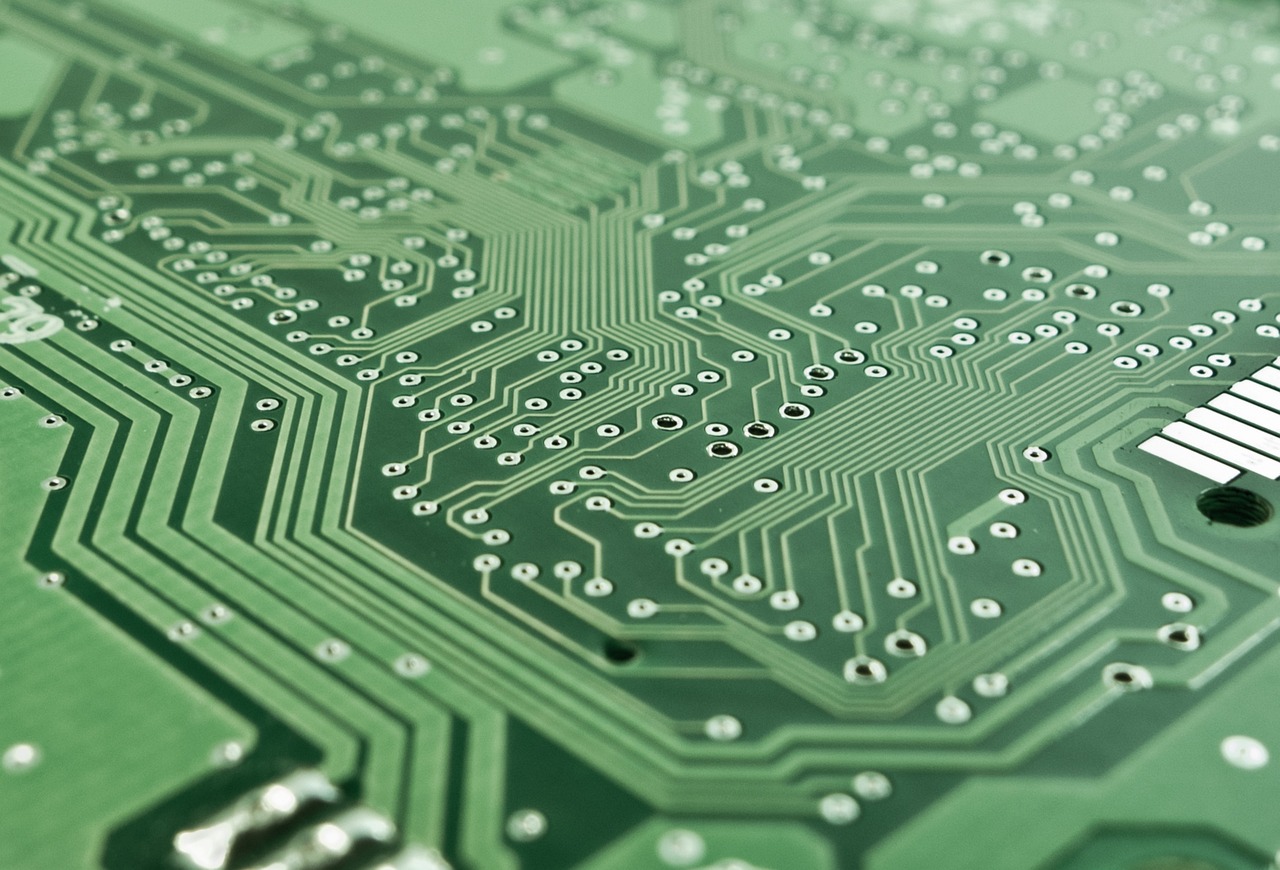
Decentralized Finance (DeFi)
Decentralized Finance, or DeFi, is revolutionizing the financial landscape by removing intermediaries and enabling direct peer-to-peer transactions. With QuarkChain's robust architecture, the DeFi sector stands to gain immensely from its unique capabilities. Imagine a world where you can lend, borrow, and trade assets without the need for banks or traditional financial institutions. That’s the promise of DeFi, and QuarkChain is at the forefront of this transformation.
One of the standout features of QuarkChain is its ability to process transactions at lightning speed. In the DeFi ecosystem, where every millisecond counts, this speed can mean the difference between profit and loss. For instance, during high market volatility, the ability to execute trades quickly can be crucial for traders looking to capitalize on fleeting opportunities. QuarkChain’s architecture allows for thousands of transactions per second, which is a game-changer for DeFi applications.
Furthermore, low transaction fees are another critical aspect that QuarkChain brings to the table. Traditional financial systems often impose hefty fees for transactions, especially when it comes to cross-border payments or currency exchanges. In contrast, QuarkChain minimizes these costs, enabling users to engage in financial activities without worrying about excessive charges. This affordability opens the door for a broader audience, allowing more people to participate in the DeFi space.
QuarkChain’s cross-chain compatibility also plays a vital role in enhancing DeFi applications. In a world where multiple blockchain networks exist, interoperability is essential. QuarkChain enables seamless communication between different blockchains, allowing DeFi projects to leverage the strengths of various platforms. This means that users can access a wide array of financial services that were previously siloed within individual blockchains.
To illustrate the impact of QuarkChain on DeFi, consider the following table that highlights key advantages:
| Feature | Benefit |
|---|---|
| High Throughput | Supports rapid transactions, crucial for trading and lending. |
| Low Fees | Makes DeFi accessible to a wider audience, encouraging participation. |
| Cross-Chain Compatibility | Facilitates interactions between different blockchain networks, enhancing functionality. |
In summary, QuarkChain’s unique features not only enhance the user experience in the DeFi space but also pave the way for innovative financial solutions that can disrupt traditional finance. With its scalable architecture, QuarkChain is well-positioned to support a thriving DeFi ecosystem that can adapt to the ever-evolving demands of the market. As we look to the future, it’s exciting to think about the potential of DeFi powered by QuarkChain, where financial services are not just accessible but also efficient and cost-effective.
- What is DeFi? DeFi, or Decentralized Finance, refers to a financial system built on blockchain technology that allows users to conduct transactions without intermediaries.
- How does QuarkChain enhance DeFi? QuarkChain improves DeFi by offering high throughput, low transaction fees, and cross-chain compatibility, making financial transactions faster and more accessible.
- What are the benefits of low transaction fees in DeFi? Low transaction fees allow more individuals to participate in DeFi activities, increasing accessibility and encouraging broader adoption of decentralized financial services.

Gaming Applications
When it comes to the gaming industry, the demand for speed and efficiency is at an all-time high. Gamers want seamless experiences, quick load times, and instant interactions. This is where QuarkChain steps in, offering a revolutionary solution that can transform the gaming landscape. Imagine a world where multiplayer games run without lag, where transactions happen in the blink of an eye, and where players can trade their in-game assets with ease. QuarkChain's scalable architecture makes this vision a reality, ensuring that the gaming experience is not just enjoyable but also efficient.
QuarkChain's unique ability to handle thousands of transactions per second means that developers can create complex, interactive games without worrying about network congestion. This is particularly crucial in games that require real-time interactions, such as battle royale or massively multiplayer online games (MMOs). The two-layer structure of QuarkChain allows for high throughput, which is essential for maintaining smooth gameplay. Players can engage in fast-paced action while the underlying technology works tirelessly to keep everything running smoothly.
Moreover, QuarkChain's cross-chain compatibility opens up a treasure trove of possibilities for game developers. They can integrate assets from different blockchains, allowing players to transfer their in-game items across various games and platforms. This interoperability not only enhances the user experience but also fosters a sense of community among players, as they can engage with multiple games and ecosystems without being confined to a single platform.
Here are some of the significant advantages QuarkChain brings to gaming applications:
- Low Transaction Fees: Players can make microtransactions without worrying about high fees eating into their gaming budget.
- Instant Transactions: In-game purchases and trades can occur immediately, enhancing the overall flow of gameplay.
- Scalability: The ability to support a large number of players simultaneously without sacrificing performance.
As the gaming industry continues to evolve, the integration of blockchain technology like QuarkChain is becoming increasingly important. Developers are already exploring the potential of decentralized gaming platforms that allow players to own their in-game assets fully. With QuarkChain, these assets can be traded on secondary markets, giving players real value for their time and effort spent in-game.
In conclusion, QuarkChain is not just another blockchain solution; it’s a game-changer for the gaming industry. By providing the necessary tools for speed, efficiency, and interoperability, it empowers developers to create immersive experiences that captivate players. As we look to the future, it’s clear that QuarkChain will play a pivotal role in shaping the next generation of gaming.
Q1: How does QuarkChain improve gaming experiences?
A1: QuarkChain enhances gaming experiences by providing high transaction speeds, low fees, and cross-chain compatibility, allowing for seamless interactions and transactions within games.
Q2: Can developers create decentralized games using QuarkChain?
A2: Yes, developers can leverage QuarkChain's architecture to build decentralized games that allow players to fully own and trade their in-game assets.
Q3: What types of games benefit the most from QuarkChain's technology?
A3: Fast-paced multiplayer games, such as battle royale and MMOs, benefit significantly due to the need for real-time interactions and high throughput.
Q4: Is it expensive to implement QuarkChain in gaming applications?
A4: QuarkChain offers low transaction fees, making it cost-effective for developers to implement its technology in gaming applications.
Frequently Asked Questions
- What is QuarkChain?
QuarkChain is a scalable blockchain solution that combines innovative architecture with sharding and a two-layer structure, allowing for high throughput and low transaction fees. It aims to address the common challenges faced by blockchain networks, such as speed and scalability, making it a robust option for various applications.
- How does QuarkChain achieve scalability?
QuarkChain employs a sharding mechanism that divides the blockchain into smaller, manageable parts. This design enables parallel processing of transactions, significantly enhancing the overall speed and efficiency of the network. By allowing multiple shards to operate simultaneously, QuarkChain can handle a higher volume of transactions without congestion.
- What are the key features of QuarkChain?
Some of the standout features of QuarkChain include high throughput, low transaction fees, and cross-chain compatibility. These features are essential for creating a more efficient and interconnected blockchain ecosystem, making it easier for users and developers to interact across different platforms.
- What is sharding, and why is it important?
Sharding is a technique used to improve the scalability of blockchain networks by breaking them into smaller segments called shards. Each shard processes transactions independently, which reduces the load on the entire network and enhances transaction speeds. This is crucial for applications that require fast and efficient processing, such as decentralized finance and gaming.
- What challenges does QuarkChain face with sharding?
While sharding offers numerous benefits, it also introduces challenges like increased complexity and potential security vulnerabilities. Ensuring the integrity and security of each shard while maintaining efficient communication between them is vital. QuarkChain continually works on solutions to mitigate these risks and enhance its sharding implementation.
- How does QuarkChain facilitate cross-chain communication?
QuarkChain enables seamless interactions between different blockchain networks, allowing for greater interoperability. This feature is crucial as it allows users to transfer assets and data across various platforms without the need for intermediaries, thus enhancing the overall functionality and user experience in the blockchain ecosystem.
- What are some use cases for QuarkChain?
QuarkChain's scalability makes it suitable for a wide range of applications, particularly in decentralized finance (DeFi) and gaming. In the DeFi space, it supports fast transactions and low fees, which can revolutionize how financial services are delivered. Similarly, in gaming, QuarkChain enhances user experiences by enabling quick interactions and transactions, leading to more engaging gameplay.




